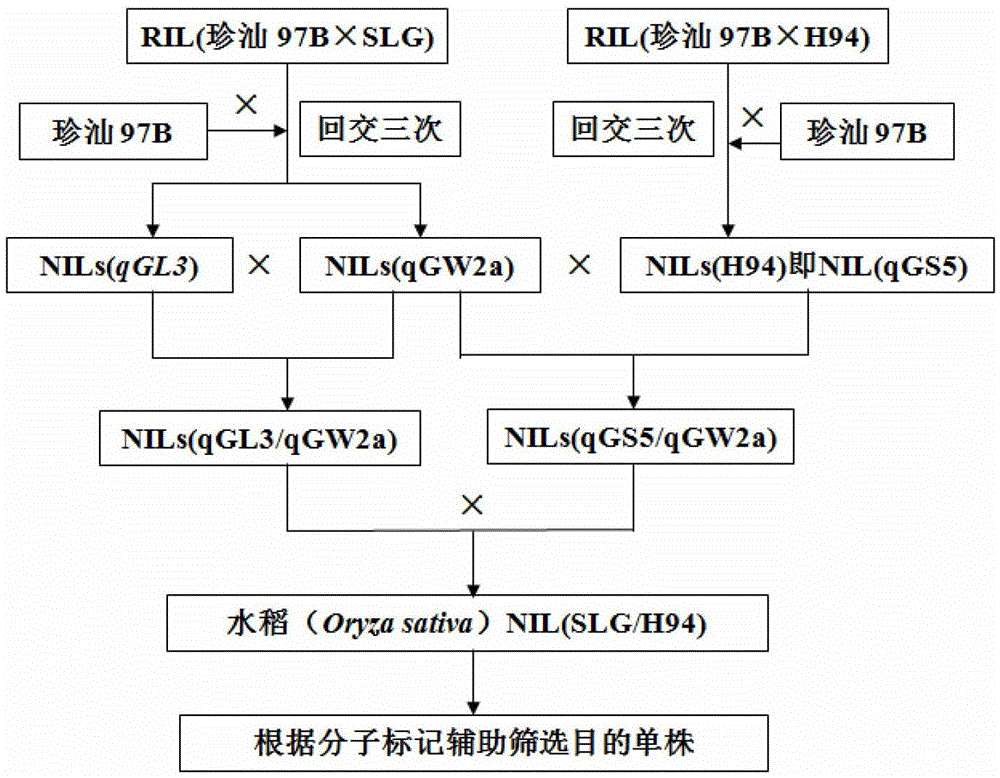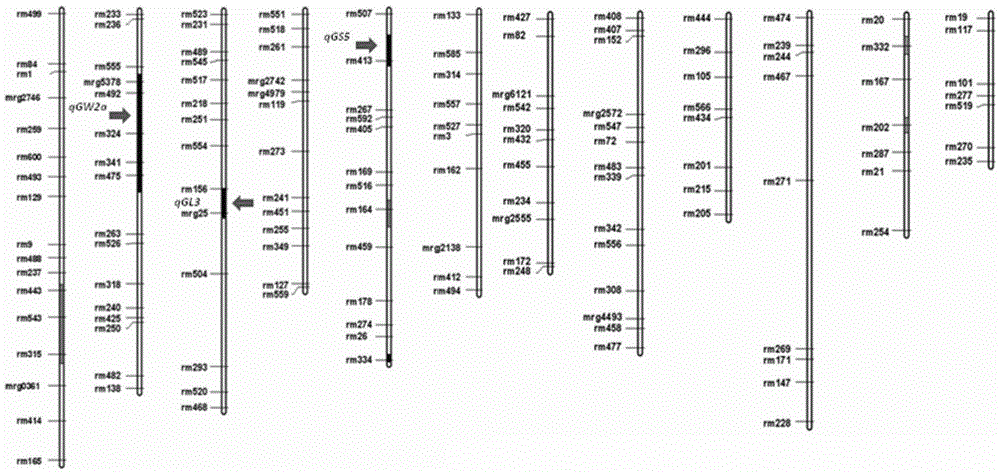A method for improving rice grain shape and grain weight
A grain type and rice technology, applied in biochemical equipment and methods, recombinant DNA technology, microbial measurement/inspection, etc., can solve the problems of linkage burden, loss of good traits, etc., and achieve the effect of improving appearance quality and grain weight
- Summary
- Abstract
- Description
- Claims
- Application Information
AI Technical Summary
Problems solved by technology
Method used
Image
Examples
Embodiment 1
[0039] Example 1: Construction of near-isogenic lines
[0040] 1.1: Genetic effect analysis of the three grain type QTLs of the target
[0041] In the implementation process of the present invention, three grain type QTLs discovered by the National Key Laboratory of Crop Genetic Improvement of Huazhong Agricultural University were used: qGW2a controlling grain width on the second chromosome, qGL3 controlling grain length on the third chromosome and the fifth chromosome The qGS5 that controls the grain width on the top, the specific position on the rice genome is roughly as follows image 3 As shown (see Ma Dapeng, 2005; Lietal.2011). Among them, qGW2a is the main effect locus controlling grain width, which can explain 66.7% of the population grain width variation; qGL3 is the main effect QTL controlling grain length, which can explain 59.8% of the population grain length variation; qGS5 can explain the population 36.2% of the variation in grain width (Table 1). In the study...
Embodiment 2
[0050] Example 2: Preparation of Molecular Markers Closely Linked to QTLs and Identification of Marker Genotypes
[0051] 2.1 Preparation of molecular markers closely linked to QTL
[0052] Information such as the sequence and the position of the SSR mark used in the present invention all come from Gramene website database ( http: / / www.gramene.org / ). Also according to the genome sequence of the japonica rice variety Nipponbare published online ( http: / / rgp.dna.affrc.go.jp) and the genome sequence of indica rice variety 93-11 (indica rice variety 93-11 is a public database resource) (see: http: / / rise.genomics.org.cn / ) as a comparison to find and design polymorphic markers . The principle of marker design is: there is a 5-10 bp deletion or insertion between the genome sequence of the above-mentioned japonica rice variety Nipponbare and the genome sequence of the indica rice variety 93-11, and the PCR fragment is about 200-400 bp. Based on the QTL mapping results found by ...
Embodiment 3
[0058] Embodiment 3 The present invention is applied in rice breeding
PUM
 Login to View More
Login to View More Abstract
Description
Claims
Application Information
 Login to View More
Login to View More - R&D
- Intellectual Property
- Life Sciences
- Materials
- Tech Scout
- Unparalleled Data Quality
- Higher Quality Content
- 60% Fewer Hallucinations
Browse by: Latest US Patents, China's latest patents, Technical Efficacy Thesaurus, Application Domain, Technology Topic, Popular Technical Reports.
© 2025 PatSnap. All rights reserved.Legal|Privacy policy|Modern Slavery Act Transparency Statement|Sitemap|About US| Contact US: help@patsnap.com



